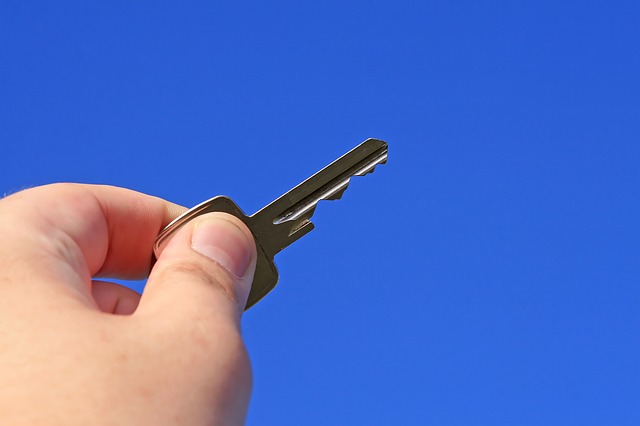The Ultimate Guide to Moving House: The Big Day
Moving house is consistently estimated as one of the most stressful events of an adult’s life, and with the sheer amount of logistics there are to coordinate, often whilst balancing a full-time job or family, it’s really no surprise. So, earlier this month, we wrote you a handy how-to guide on moving house, to steer you calmly through the subsequent months, weeks and days, leading up to your move, but it doesn’t end there. The day of the move, although the most exciting, is often also the most exacting. With emotions running high, and the strain of juggling multiple responsibilities and locations, it’s very easy to get overwhelmed. Luckily for you, we’re back with our second guide and a series of useful tips to get you successfully through the big day.
By now, you’ve got all your belongings packed up into boxes, your emergency kit is nearby, and you’re already dreaming of that glass of wine you’re going to be sipping in your new living room by the end of the day. As with the rest of the move, organisation and preparedness really are the key for a smooth operation. Simple things like getting up early to double check everything is packed, that your boxes will be packed into the van in the right order and double checking with your estate agent or broker where to leave the keys, will all help towards minimising the stress of the day.
Prepare Your New Home Before the Move
Firstly, before you start mobilising things on your end, it’s important to confirm that everything is prepared at your new house. The last thing you want to do is arrive with all your things to find out you can’t even move in because of one reason or another.
If the house is within a reasonable distance, it’s always worth going over there the night before, or the morning of, the move, to give the house a quick once over. Make sure the house is clean enough to move your furniture and belongings straight in, and that the previous tenants, or owners, haven’t left anything behind. Similarly, it’s good to get a clear visualisation of the layout of the land, so when you do get to divvying up the boxes, you can efficiently designate the boxes to their respective rooms. It might be equally handy to draw out a quick map of the layout, with labelled rooms, for the reference of the removal company – or, if you’re especially organised, you can always colour code the rooms to the labels on the boxes, although be prepared for a few pleasantly surprised raised eyebrows.
Whilst it’s feasible you may have already asked the previous owners, or your estate agent, some important questions about adjusting to life in your new home, the following are some key reminders of things to find out:
- The location of the stopcock to shut off the water
- The location of the gas and electricity metres
- The location of the thermostat
- Do any of the surfaces need particular cleaning products
- The day the bins and recycling are collected
- If they have any old tins of paint the same colour as the walls
- Are there any existing warranties on electrical items
- Where the kitchen and bathroom tiles, or any fixed furniture, came from
- The name and details of the company that supply the current broadband and energy

What to Do Before You Move House
So, the new house is primed and ready to move into, you’ve already sorted out your plan of action ahead of time, and corralled a few friends and family members to assist, so what’s next?
Ideally, if you followed our previous guide, you planned well ahead of time and everything is waiting and ready to be moved, but there’s no harm in double checking that you’ve got the following loose ends all tied up before you say your final goodbyes and pack everything into the removals van.
- Make sure your route ahead is clear. In our last article, we encouraged you to pre-plan your route to your new house, and within reason, scope it out, to make sure that the removal van, or lorry, can definitely fit through the streets/there are no low hanging bridges. On the day of the move, it’s a wise idea to look at the traffic along your route plan, to see if there may be any obstructions such as an accident, that might throw your plan off, or anchor you in traffic for too long. If the route doesn’t look clear, inform your removals company and discuss alternative routes.
- Similarly, make sure that any parking arrangements you made prior to the day are still valid and enforced.
- Although you should already be all packed up, a few hours before you move, ensure that all your removal boxes are clearly marked with the room they belong in and that all fragile items are properly labelled and wrapped accordingly. Also, now is a good time to start marking your boxes in the order they need to be packed into the bus, leaving any potential essentials such as a kettle, eating and cooking utensils and spare clothes are left towards the front of the truck and are in easy reach for when you arrive at your new home. Unpacking is always easier with a brew! Likewise, remember to keep your emergency essential kit with you, or as close as can be.
- If you can, depending on the number of boxes you’ve got strewn about the house, give the house a quick once over, making sure it is clean for the new owners. Check in the drawers, behind cupboards, and the fridge and freezer for anything that may have been inadvertently left behind.
- Keys. By now, you should have already picked up the keys for your new home, and if you haven’t, but it’s important to remember to leave all your own keys behind, or in a specified place, including any your friends or family members may have.
- Take down all metre readings to pass onto your provider, and photographic proof if necessary.
- Have a think about any miscellaneous items you may need in your new home, or, anything you may need to assemble or disassemble furniture at the other end. Handy things to carry include things like light bulbs, screwdrivers and spare screws for your furniture.
- After everything is packed away into the van, give your house one last sweep over and make sure everything is in good condition.

Unpacking into Your New House
You’ve made it! Hopefully, you reached your new home without any hitches or hiccups along the way, and now you’ve got the daunting but exciting task of moving yourselves in. Whilst there’s no universal formula for exactly how to move into your home, there are a few things that every new homeowner needs to consider doing before settling down.
- If you are moving into a rented home, it is always a useful idea to carefully inspect the new home, as well as taking clear photographs of any pre-existing damage so you don’t get stung, as, or if, you move out. Make sure you email these to your landlord to establish a chain of evidence and to notify them of any potential issues.
- Check, read and record the utility metres, again, taking photographs for proof of the number is a good idea.
- Before you start moving anything out of the van, it may be beneficial to put down old cardboard, or sheets, over the floors to protect any carpet or wood from stains, scuffs, or damages. You don’t want to mess up your home on the first day! Similarly, notify your removals company, or any extra help you’ve roped in, about any potentially tricky items of furniture or walls and features of the house they may need to be extra wary of when moving in.
- Check your inventory as it is being processed out of the van, and only sign when you are completely and totally happy with the state of your belongings and that they have not been damaged and/or broken en route.
- Clarify any special instructions to your removal team, identify which piece of furniture goes where.
- Make sure to check that all given keys definitely work and that you’ve completed a thorough check of the house and any surrounding gates and buildings. It may be an idea to hire a locksmith to get your locks changed, just in case the last owners left any keys in the ether.
- Put all your safe documents in a place where they won’t get destroyed or lost, although it sounds strange, the bath is often an ideal place to store these on moving day!
- Finally, unpack your survival kit and get that kettle on for a cuppa! Your friends, family and removal team will definitely appreciate it.
